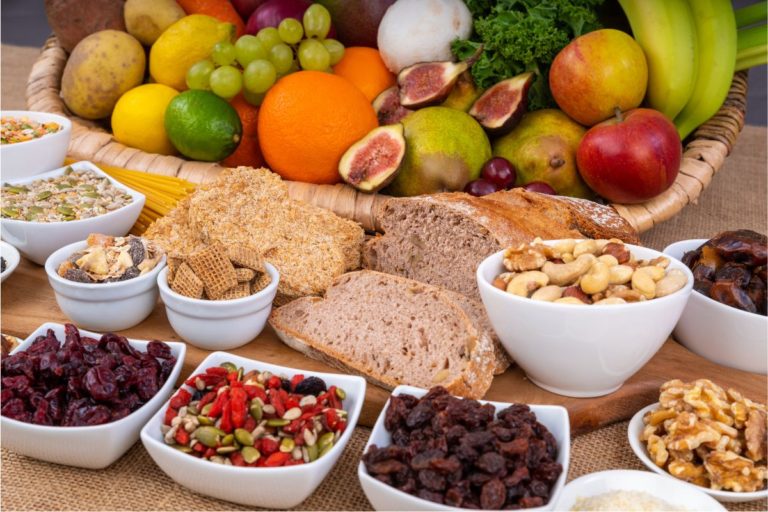12 Fatty Foods to Limit and 12 to Include in Your Diet Regularly to help you keep in the best health. Navigating nutrition labels can be daunting, and it’s crucial to understand that foods rich in total fat won’t necessarily contribute to weight gain.
Distinguish between unhealthy fats, like saturated and trans fats, and beneficial ones like monounsaturated and polyunsaturated fats. These healthy fats can boost your good cholesterol (HDL) and reduce the bad (LDL).
So, here is a guide to deciphering high-fat foods:
A more detailed breakdown of each item, incorporating the information given:
Being informed about the types of fats in foods helps you make healthier dietary choices.
Navigating the world of fats can be tricky because not all high-fat foods are detrimental, and understanding nutrition labels is crucial. So, for clarity, here’s a guide on foods to limit and those to embrace based on their fat content:
Avoid These High-Fat Foods:
1. Baked Desserts: They often contain hidden fats like butter or oil. While tempting, many desserts like cookies, cakes, and brownies have a base of butter or oil. Limit these treats for healthier alternatives.
2. Butter: Though tasty, it’s saturated fat-heavy. Delicious on toast or bagels, butter is unfortunately rich in saturated fats. Remember, a 2-tablespoon serving can have up to 24 grams of fat.
3. Candy: Especially chocolate candies, they are laden with fats. Chocolate candies, in particular, are high in saturated fats from cocoa butter. For instance, popular candy bars can contain around 15 grams of fat.
4. Chips: Opt for chips cooked in healthier oils. Although potatoes are low in fat, the oils used in chips are not. Opt for chips cooked in healthier oils or make your own.
5. Deep-fried Foods: They contain unhealthy fats from the oils used. Frying healthy ingredients in oils rich in saturated and trans fats alters their nutritional profile. Always opt for grilled or baked versions.
6. Fast Food: Typically high in unhealthy fats and preservatives. From burgers to fries, most fast food is laden with unhealthy fats, preservatives, and high sodium content.
7. Fatty Meats: Including pork belly, bacon, and some steaks. Cuts like pork belly or bacon are naturally fatty. A 3-ounce serving of pork belly, for instance, contains 45 grams of total fat.
8. Frostings & Icings: They usually contain heavy creams and butters. These sweet delights often have heavy cream, cream cheese, or butter, making them high in saturated fats.
9. Heavy Cream: Often found in desserts and sauces. Found in many dishes, from soups to coffees, it’s rich in saturated fat. Moderation is key.
10. Pastries: Donuts, muffins, and other baked goods contain hidden fats. Breakfast items like donuts and muffins typically contain butter, oil, and other fats.
11. Pizza: American versions tend to be more fat-heavy than their Italian counterparts. American-style pizzas tend to be richer in fats than traditional Italian ones due to thicker crusts and cheese layers.
12. Salad Dressings: Creamy dressings are frequently fat-rich. While salads are healthy, creamy dressings like ranch or blue cheese can add significant fats to your meal.
Consume These Healthy Fat Foods:
1. Avocados: Packed with beneficial monounsaturated fats. A medium avocado has about 23 grams of total fat, but it’s mostly heart-healthy monounsaturated fat.
2. Cheese: Cheese varieties like blue, brie, and cheddar are high in protein, calcium, and beneficial fats like CLA and contains healthy fats, but should be consumed in moderation.
3. Chia Seeds: Rich in omega-3 fatty acids. These tiny seeds are nutritionally dense, offering protein, fiber, and beneficial fats.
4. Dark Chocolate: Contains heart-healthy Oleic acid, a heart-healthy fat also found in olive oil.
5. Eggs: High in polyunsaturated and monounsaturated fats. A whole egg provides polyunsaturated and monounsaturated fats. For those watching fat intake, egg whites are an option.
6. Fish: Fatty fish like salmon or mackerel are loaded with omega-3 fatty acids, which are beneficial for heart health.
7. Flaxseed: Mostly consists of beneficial fats, and although they are 67% fat, most of it is the healthy kind, making flaxseeds beneficial for your diet.
8. Nuts: Almonds, hazelnuts, and walnuts are particularly good choices and offer a good balance of beneficial fats.
9. Nut Butters: Go for natural versions to avoid unhealthy additives. Natural almond, cashew, or peanut butters are rich in healthy fats. Avoid versions with added sugars or hydrogenated oils.
10. Olive Oil: A staple in the Mediterranean diet, full of monounsaturated fats. Rich in monounsaturated fats, it’s a heart-healthy choice for cooking and dressings.
11. Tofu: A plant-based protein, tofu is also high in polyunsaturated fats. A great meat alternative with beneficial fats.
12. Yogurt: Full-fat versions contain beneficial monounsaturated fats which are healthy for the heart, but always be mindful of the serving size.
By understanding the difference between good and bad fats, you can make informed dietary choices that promote heart health and overall well-being.
- Vintage and Retro Styles: A Timeless Comeback
- Prevent and Treat Cellulite: Your Ultimate Guide
- Social Media’s Impact on Fashion Trends
- Smart Home Tech: Latest in Home Improvement
- Tech-Infused Fashion: Wearable Tech, 3D Print, Digital


